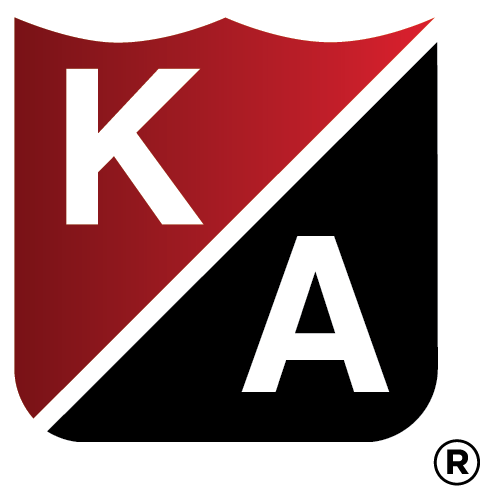By Jonathan C. Shoemaker, Lee/Shoemaker PLLC, and Rochanne Keane, Beazley Insurance Services
When presented with a new and exciting project in an out-of-state jurisdiction, most design professionals begin thinking about the opportunity to enhance their portfolio, to generate a healthy fee, or both. While most design professionals consider whether they hold an individual license to practice architecture or engineering in the out-of-state jurisdiction, fewer design professionals focus their attention on whether their firm is qualified to transact business and to practice in the out-of-state jurisdiction.
Far too often, the first time a design professional discovers the various regulations governing the practice of architecture or engineering in an out-of-state jurisdiction is when claims are asserted related to the quality of those services. Rather than investigating the regulatory requirements imposed in an out-of-state jurisdiction when claims of professional negligence are being asserted, the best course of action is to comply with all regulatory requirements before performing any professional services in an out-of-state jurisdiction.
Qualifying to Provide Professional Services in Most Jurisdictions
In most jurisdictions, there are three requirements a design firm must comply with in order to practice in accordance with all regulatory requirements:
- Individual license to practice architecture or engineering in the jurisdiction for the architect of record/engineer of record;
- Firm registration to transact business in the jurisdiction; and
- Firm license to practice architecture or engineering in the jurisdiction.
The first requirement applies to the individual licensee who is performing, or supervising and controlling, the professional services. The second and third requirements apply to the design firm who is contracting to perform the professional services.
Individual Licensure Requirement
Subject to limited exceptions, every jurisdiction mandates that architecture or engineering services be performed by, or under the supervision and control of, a licensed professional in that jurisdiction. Most jurisdictions broadly define the practice of architecture and engineering to include the full array of professional services provided by design professionals. In Virginia, for example, the practice of architecture is defined as follows:
The “practice of architecture” means any service wherein the principles and methods of architecture are applied, such as consultation, investigation, evaluation, planning and design, and includes the responsible administration of construction contracts, in connection with any private or public buildings, structures or projects, or the related equipment or accessories. Va. Code § 54.1-400.
In most jurisdictions, the definition of professional practice is comprehensive in scope and – depending on how the jurisdiction’s licensure board has defined professional practice – may including the solicitation of work in a jurisdiction.
When design professionals perform services in an out-of-state jurisdiction without an individual license, they often justify their unlicensed status by suggesting that the nature of the services provided does not require a license. For example, a residential architect may argue that they need not have an individual license in a particular jurisdiction because plans submitted to the authority for approval need not be signed and sealed. As professional practice is typically regulated by a state board, and not a locality’s filing requirements, performing any kind of services without a license in the out-of-state jurisdiction can be a mistake, unless the licensure board has expressly authorized the unlicensed performance of services the design professional intends to provide.
Firm Qualification and Licensure Requirements
Most design professionals enter into contracts and perform services through their firm, which typically operates as a corporation, a limited liability company, or a limited liability partnership. In most states, any business (whether a design firm or not) that intends to transact business in the jurisdiction is required to register with the state and to appoint an agent within the state. Additionally, in most states, any business that intends to engage in professional practice is required to obtain a license or permit from the applicable board of architecture or engineering. Design firms who transact business in a jurisdiction before obtaining both qualifications may be surprised to learn that they may be engaged in illegal practice.
The process for complying with these two regulatory obligations varies from state to state. In some jurisdictions, a design firm must register as a foreign company before it may obtain a permit to engage in professional practice. In other jurisdictions, a design firm must demonstrate its qualifications to engage in professional practice before it registers as a foreign company in the state.
Moreover, the requirements for becoming qualified to engage in professional practice as a firm vary from state to state. In some states, a company need only designate a professional in responsible charge, licensed in the jurisdiction, in order to qualify to engage in professional practice as a firm. In some states, a company must be owned entirely by licensed individuals in order to engage in professional practice as a firm. In some states, a certain number of the firm’s owners or management must be licensed in that state in order to engage in professional practice as a firm. In some states, a company must take a particular corporate form (e.g., corporation, LLC, or LLP) in order to engage in professional practice as a firm.
Before pursuing work in a new jurisdiction, the prudent design professional will consult with a competent legal professional to advise them on how to meet all of the regulatory requirements the jurisdiction may impose on a design firm seeking to transact business there.
Stay tuned for Part 2 – the Consequences…

Jonathan C. Shoemaker
Jonathan believes that the best solution to most problems is often the simplest: what does the contract say? Jonathan begins every new engagement seeking to understand how the parties on a construction project elected to allocate risk and responsibility before the project, and then works with his client to develop a plan for bringing the issue to resolution as expeditiously as possible consistent with the client’s goals.
Jonathan has tried cases before judges, juries, and arbitrators, and relishes the opportunity to advocate for his clients in court and in arbitration. Jonathan enjoys getting into the weeds of a dispute, deconstructing the issues presented throughout the discovery process, and then presenting the dispute clearly and concisely for the fact finder.
Jonathan’s experience includes noteworthy appellate work on behalf of design professionals and the design professional industry, and frequently speaks on risk management issues, best practices for design professionals, different project delivery methods, and legal updates both at in-house seminars for his clients and at programs put on by design professional organizations and insurance carriers.
Jonathan C. Shoemaker
Member, Lee/Shoemaker, PLLC
Phone: (202) 971-9401
Email: jcs@leeshoemaker.com

Rochanne Keane
Rochanne Keane is the Focus Group leader for the U.S. Architects & Engineers Claims Team and directly manages professional liability claims for design professionals. She has extensive experience handling construction defect litigation nationally and internationally. She serves on the AIACC Task Force and other A&E affiliated advisory boards.
Rochanne has spoken at numerous national and regional forums to discuss construction defect litigation, contract and insurance issues, including risk management for design professionals. Rochanne is licensed to practice law in the states of California, New York and New Jersey.
Rochanne Keane
Claims Specialist, Beazley Insurance Services
Phone: (415) 263-4058
Email: rochanne.keane@beazley.com



